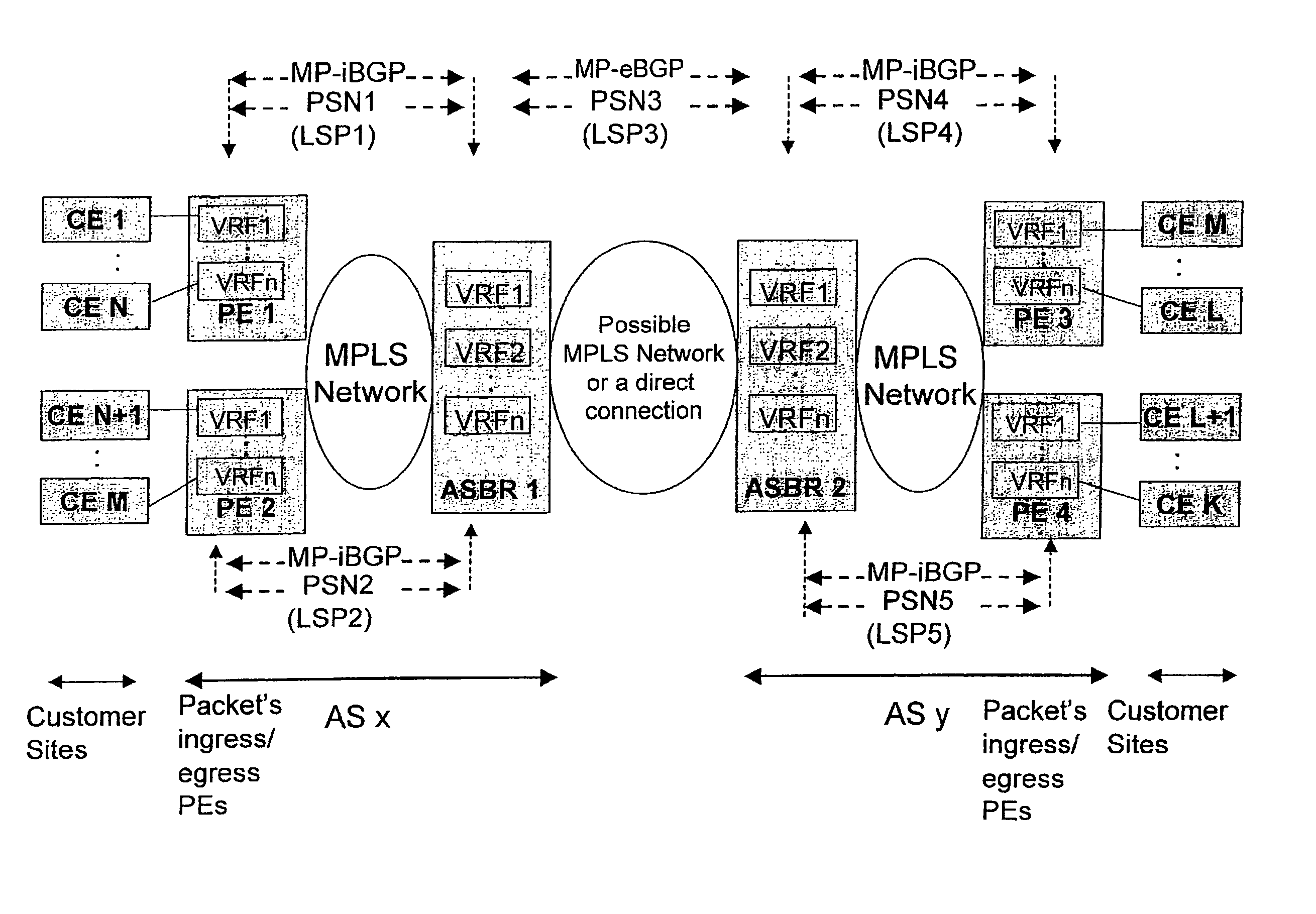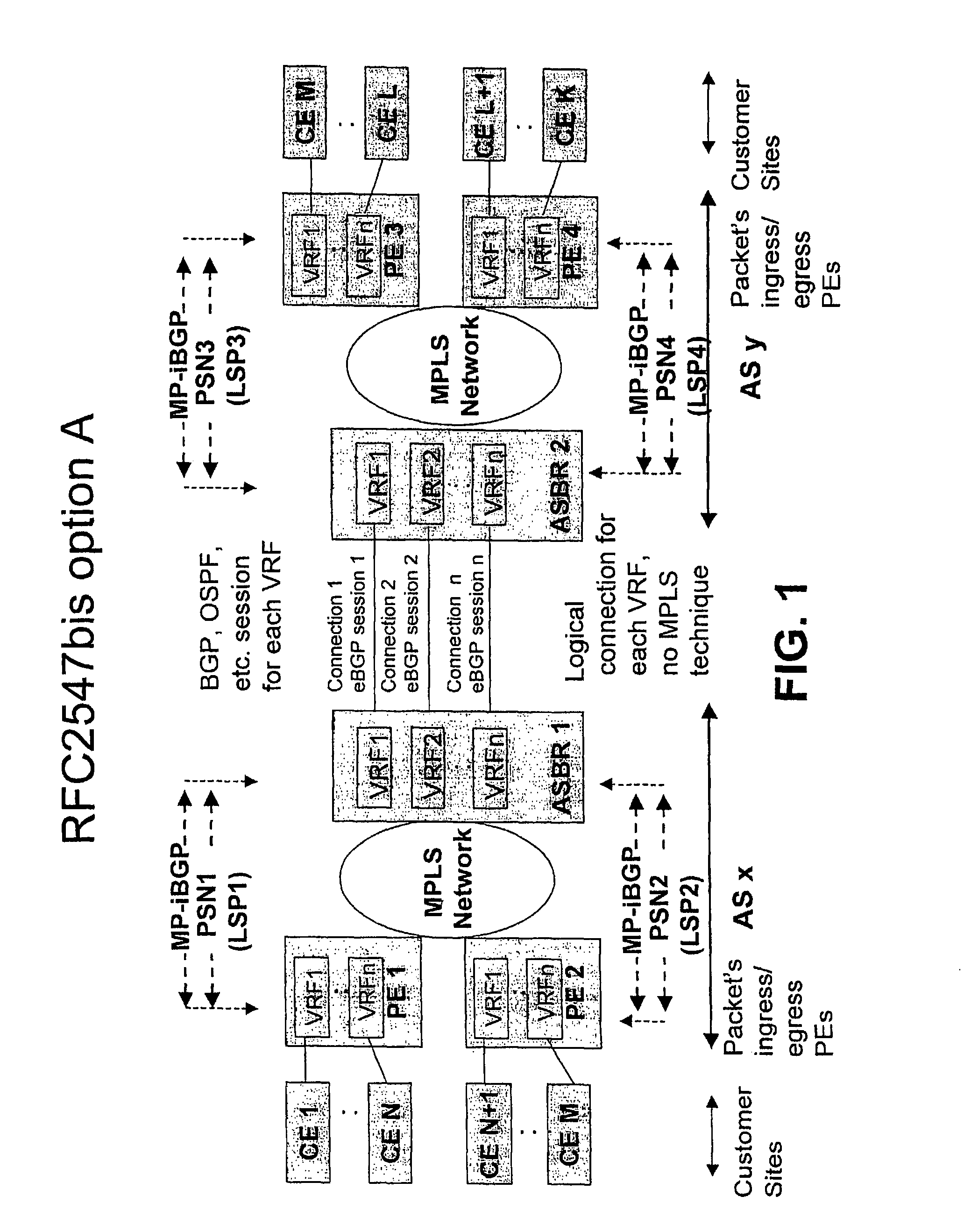Method for providing virtual private network services between autonomous systems
a virtual private network and autonomous system technology, applied in the direction of digital transmission, data switching by path configuration, electrical equipment, etc., can solve the problems of label switched path between several edge routers of different service providers, inability to use mpls technique between, and security risks of label switched paths
- Summary
- Abstract
- Description
- Claims
- Application Information
AI Technical Summary
Benefits of technology
Problems solved by technology
Method used
Image
Examples
Embodiment Construction
[0027]The principles of the invention will be described in more detail by means of illustrating examples. In these examples, the aggregation edge router according to the invention is implemented at an Autonomous System Border Router (ASBR) and in a “BGP / MPLS IP VPN” environment substantially meeting the RFC2547bis. Details of the “BGP / MPLS IP VPN” can be obtained from relevant Requests for Comment (RFCs) and Internet-Drafts available at http: / / www.ietf.org and incorporated herein by reference.
[0028]However, before describing the example embodiments of the invention, RT and RD attributes of the “BGP / MPLS IP VPN” are described briefly in order to facilitate description of the examples.
[0029]A VPN-IPv4 address is a 12-byte quantity, beginning with an 8-byte “Route Distinguisher (RD)” and ending with a 4-byte IPv4 address. If several VPNs use the same IPv4 address prefix, the Provider Edge routers (PE) trans-late these into unique VPN-IPv4 address prefixes. This ensures that if the same...
PUM
 Login to View More
Login to View More Abstract
Description
Claims
Application Information
 Login to View More
Login to View More - R&D
- Intellectual Property
- Life Sciences
- Materials
- Tech Scout
- Unparalleled Data Quality
- Higher Quality Content
- 60% Fewer Hallucinations
Browse by: Latest US Patents, China's latest patents, Technical Efficacy Thesaurus, Application Domain, Technology Topic, Popular Technical Reports.
© 2025 PatSnap. All rights reserved.Legal|Privacy policy|Modern Slavery Act Transparency Statement|Sitemap|About US| Contact US: help@patsnap.com



